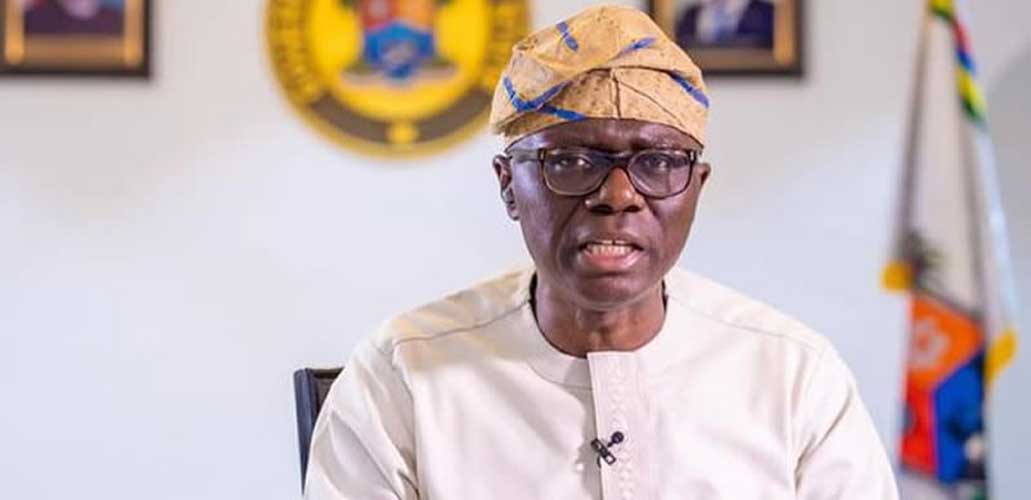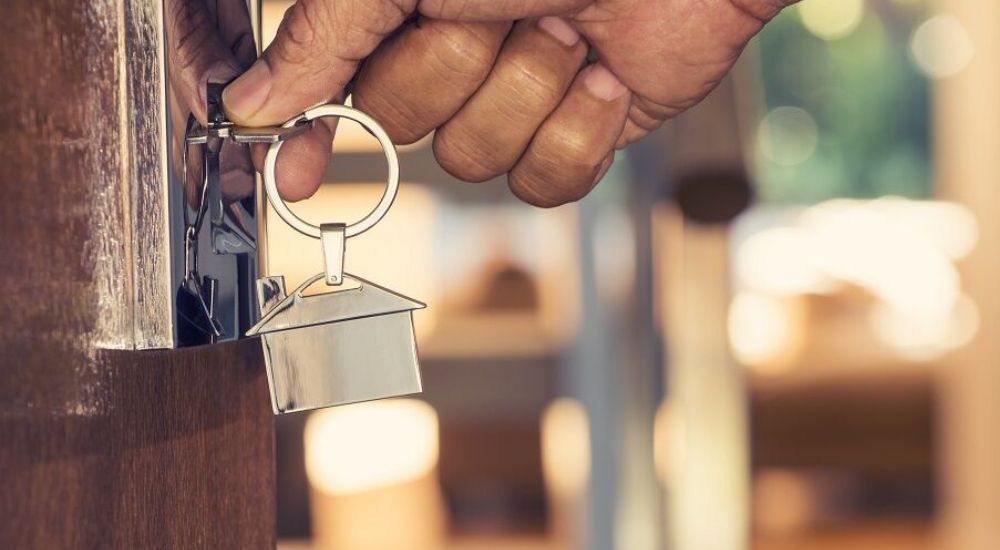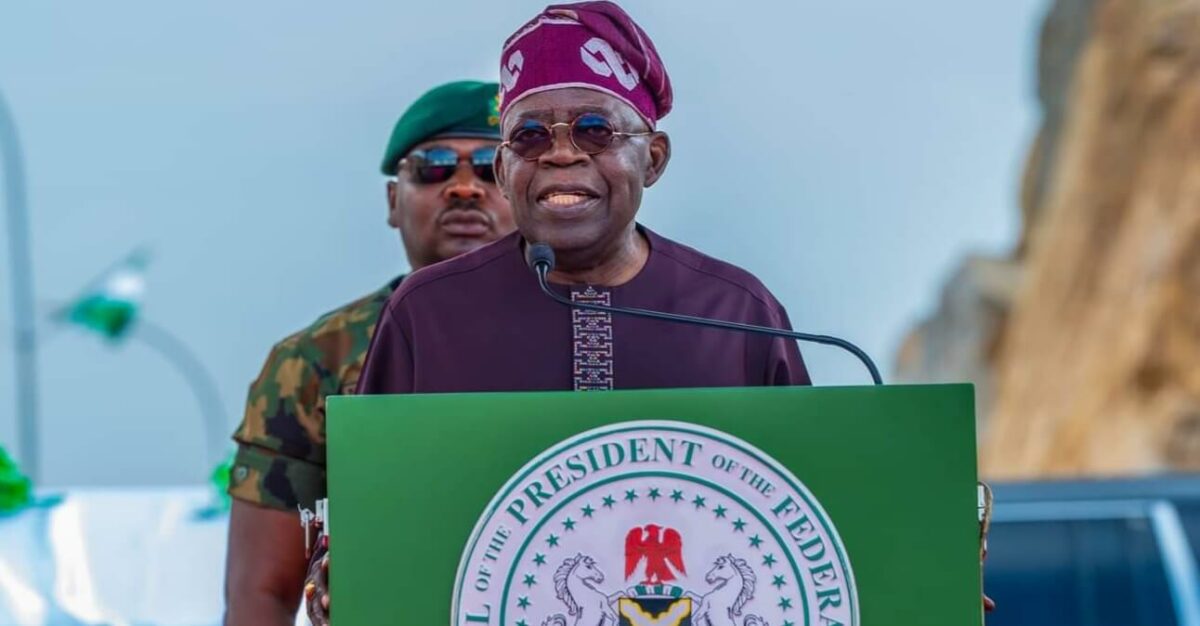Six Years Of Sanwo-Olu: Lagos Leaps Forward Amid Lingering Potholes

As Governor Babajide Sanwo-Olu crosses the six-year mark of his leadership in Lagos State, Nigeria’s commercial nerve centre, an examination of his administration reveals a blend of bold infrastructural achievements, persistent socio-economic challenges, and lingering questions about inclusive development.
Transportation
One of the most visible landmarks of Sanwo-Olu’s tenure has been the transformation of Lagos’ transport infrastructure. In early 2024, President Bola Tinubu commissioned the first phase of the Lagos Rail Mass Transit (LRMT) Red Line project—a 37-kilometre rail line, with 27 kilometres now operational from Agbado in Ogun State to Oyingbo in central Lagos. This segment features eight stations, significantly reducing travel time from over three hours by road to just 40 minutes by train.
Constructed within 30 months, the Red Line uses shared tracks with the Nigerian Railway Corporation’s Lagos-Ibadan route—a pioneering model in Nigeria’s urban transport design. With an initial daily capacity of 250,000 passengers, projections aim for 750,000 riders once the system becomes fully operational. Financially, the project benefited from funding partnerships with the Central Bank of Nigeria, United Bank for Africa, First Bank, and Zenith Bank.
The development followed the launch of the LRMT Blue Line, inaugurated by former President Muhammadu Buhari in January 2023. Stretching 13 kilometres with five stations from Marina to Mile 2, the Blue Line began operations in September 2023 and had moved about two million passengers within its first year.
In a bid to reduce rail-vehicle conflicts, the Red Line’s rollout was complemented by five new flyovers in Yaba, Oyingbo, Agege, Mushin, and Ikeja. Sanwo-Olu also expanded marine transport by commissioning 15 locally built ferries, each with a 40-passenger capacity, to improve access to Lagos’s waterways. This initiative underscores the state’s push for a multi-modal transport ecosystem—rail, road, and sea.
Road Expansion Drive
Similar to the rail, road infrastructure has seen significant investment. By mid-2024, the state had completed and commissioned 172 roads covering nearly 178 kilometres. An additional 253 projects, amounting to over 298 kilometres of roads and 5.64 kilometres of bridges, were under various stages of completion.
The efforts, while commendable, have not fully solved the chronic traffic congestion that plagues the city. Lagosians still spend hours daily in gridlocks, with traffic management remaining one of the weakest links in the mobility chain.
Fourth Mainland Bridge
While the transport narrative shines, the much-anticipated Fourth Mainland Bridge remains a glaring gap. Proposed in 2006, this $2.5bn Public-Private Partnership project is designed to span 37 kilometres, with three toll plazas and nine interchanges, stretching from Ajah to Ikorodu and onto the Lagos-Ibadan Expressway. Upon completion, it would be the longest bridge in Africa.
In October 2023, Lagos secured a $1.352bn investment partnership with the African Export-Import Bank and Access Bank. This funding is earmarked for several long-term infrastructure projects, including the Fourth Mainland Bridge, the Omu Creek Project, and the second phase of the Blue Line from Mile 2 to Okokomaiko.
“It was a significant moment in Guyana at the Africaribbean Trade and Investment Forum 2023 as we’ve secured a partnership with the African Export-Import Bank and Access Bank for a massive investment of $1.352 billion in Lagos.
“This investment will power our long-term infrastructure projects, demonstrating confidence from international and local partners in our growing economy.
“As we move forward, this investment will help us realize key projects, including the Fourth Mainland Bridge, Omu Creek Project, and the 2nd Phase of the LRMT Blue Line from Mile 2 to Okokomaiko. We’re committed to creating a better future for Lagos and its people.
“Our vision for Lagos is becoming a reality with the Lekki-Epe International Airport and the Lagos Food Systems and Logistics Hub in Epe. These projects will further boost our economy and serve generations to come.
“The future of Lagos is brighter than ever,” Sanwo-Olu said via his social media handles.
Yet, construction on the bridge remains elusive, with only feasibility studies and investment agreements announced so far.
Economic Milestones Amid Revenue Concerns
In April, Lagos launched its Economic Development Update, revealing a Gross Domestic Product (GDP) of $259bn (based on purchasing power parity), making it the second-largest city economy in Africa after Cairo. In the first half of 2024 alone, the Lagos economy grew from N19.65tn to N27.38tn —demonstrating resilience in the face of national economic headwinds.
However, a concerning statistic emerged: the state’s tax-to-GDP ratio stands at just 2.3 percent. This highlights Lagos’s over-reliance on non-tax revenues and underscores the urgent need for broader revenue mobilization to fund its massive infrastructure ambitions sustainably.
A former Labour Party gubernatorial candidate in the state, Mr. Gbadebo Rhodes-Vivour, recently criticised the state government for failing to translate economic growth into improved living conditions for Lagosians.
He pointed to crumbling infrastructure, skyrocketing rents, and inadequate public services as evidence that many residents are not benefiting from the city’s economic success.
“Our roads remain plagued by potholes and streetlights in most communities remain non-functional, contributing to security concerns. Public transportation remains insufficient for a city of our size and our waste management systems require new thinking,” he said on X (formerly Twitter), emphasising how poor infrastructure affects millions of Lagosians.
Structural Reforms, Poor Education Outcomes
In 2022, Sanwo-Olu initiated structural reforms by converting the Lagos State Polytechnic into the Lagos State University of Science and Technology and merging two colleges of education into the Lagos State University of Education. These moves aimed to enhance capacity and streamline academic governance.
However, the administration’s budgetary commitment to education remains unimpressive. In Q1 of 2025, only N631.86m —just 2.7 percent —of the approved N23.16bn education budget was disbursed. This underfunding comes amid troubling performance metrics.
Of the 58,188 students sponsored by the state to take the 2024 WASSCE, over 54 percent failed the exams. With Lagos accounting for 6.4 percent of Nigeria’s out-of-school children, concerns are growing about the quality and equity of public education in the state.
In a letter dated April 26, 2025, addressed to the governor, a former governorship candidate in the state, Mr. Funso Doherty, described the WASSCE failure rate as a “crisis” and demanded immediate and sustained efforts to avoid long-term developmental setbacks.
He urged the government to double its current budgetary allocation to education from 7 per cent to at least 14 per cent within the next two to three years.
Doherty referred to the results as a harsh indictment of governance in Lagos over the past 26 years, pointing to a systemic neglect of public education.
“I write in reference to the submission made by the Hon. Commissioner for Basic and Secondary Education at this week’s Ministerial Press Briefing, in which he reportedly revealed that over 31,000 out of 58,188 students in Lagos State public schools who registered and sat for the 2024 WASSCE failed the examination, an alarming 54.3 per cent failure rate,” Doherty wrote.
“This figure is deeply troubling. In a state with a predominantly youthful population, it serves as a harsh indictment of governance outcomes over the past 26 years, spanning the current and previous administrations since 1999. It reflects a disconnect between the priorities of government and the pressing needs of the less-privileged majority.”
Housing Crisis And Population Boom
Despite infrastructural advances, the housing sector remains arguably the most underperforming area under Sanwo-Olu. With Lagos’s population projected to hit 32.6 million by 2050, the housing shortfall is critical. The state currently accounts for 17 million of Nigeria’s estimated 28 million housing deficit.
While both government and private sector actors have made interventions, housing remains unaffordable for the average resident. Rent, land prices, and construction costs continue to outpace wage growth, making life difficult for residents.
According to Rhodes-vivour, the housing crisis continues to push working-class Lagosians to the brink, with exorbitant rents consuming a large portion of their income.
“Although a GDP of $259bn is worth the applause, it is a clear demonstration of the tenacity, resilience, and enterprise of Lagosians, despite the glaring incompetence of the government. We must confront the uncomfortable truth that these impressive figures (GDP, PPP OR IGR) have not translated into improved living conditions for working-class Lagosians.
“For starters, working-class Lagosians continue to face a severe housing shortage with skyrocketing rents consuming a disproportionate percentage of their income.
“Many families remain crammed into inadequate living spaces and many others are at the mercy of greedy landlords, mostly because housing supply has been abysmal,” he noted.
Road Ahead
Sanwo-Olu’s administration is marked by bold vision and harsh realities. His investment in transportation and economic reform, reflects a forward-thinking approach. Yet, persistent issues in housing, education, and traffic management erode these gains.
A public affairs commentator and political analyst, Mr. Debo Adeniran, commended the Sanwo-Olu administration for its notable achievements in healthcare, food security, infrastructure development, political engagement, and other key areas.
He, however, urged the government to address the persistent traffic congestion in the state by improving the traffic management system.
“The traffic control system should be improved upon,” Adeniran said, calling on traffic management officials to be more efficient, particularly during peak hours.
Addressing the issue of flooding, which remains a major challenge during the rainy season, Adeniran urged the state government to construct wider and deeper drainage systems in flood-prone areas.
“Flood control is also not effective yet in some areas. With every drop of rain, there are places that get flooded,” he noted.
He also appealed to the government to pay more attention to road infrastructure in Ikorodu and Badagry.
“Lagos is doing well as far as modernisation of governance and reaching the people is concerned. However, there’s always room for improvement,” he added.
Meanwhile, the Labour Party in Lagos State has expressed strong dissatisfaction with the performance of the state government, describing governance under the incumbent administration as “below the expectation of Lagosians.”
Speaking to THE WHISTLER, the Secretary of the party, Mr. Sam Emeka Okpala, criticized the current state of infrastructure and quality of life in the state, despite its vast resources and economic potential.
“Governance in Lagos State is below the expectation of Lagosians. Six years of the incumbent governor, nothing has changed. It is the same old story,” Okpala said.
He argued that Lagos has the potential to rival global cities like Dubai if its resources are judiciously utilized.
“The resources available to Lagos State government — if they use 40 percent of it to work for Lagos and Lagosians, Lagos would beat Dubai in all ramifications. But here we are: bad roads, traffic everywhere, refuse everywhere, maternal mortality rate so high, power zero. For us as a party, we are not excited at all,” he said.
Okpala also took a swipe at recent claims by the state government regarding the growth in GDP, noting that the purported economic improvements have not translated into tangible benefits for ordinary residents.
“The reality is what do we have on ground? How has our lives been made better in the last six years?,” he asked.
“It is an irony if GDP is rising and Lagosians are getting poorer by the day. So, what is the logic?” he added.
In the first quarter of 2025, Lagos generated N582.45bn in total revenue. This represents 79 per cent of the state’s quarterly revenue target of N728.90bn and 20 per cent of the annual revenue projection of N2.92tn (excluding net grants and the opening balance).
Lagos is gaining global attention , particularly in the area of tech and entertainment. Leveraging strategic partnerships, a vibrant and youthful population, the state government could harness the enormous potential the state has. However, that will happen only if the government listens, learns, and leads with deliberate urgency by balancing infrastructure with inclusivity.
Six Years Of Sanwo-Olu: Lagos Leaps Forward Amid Lingering Potholes is first published on The Whistler Newspaper





